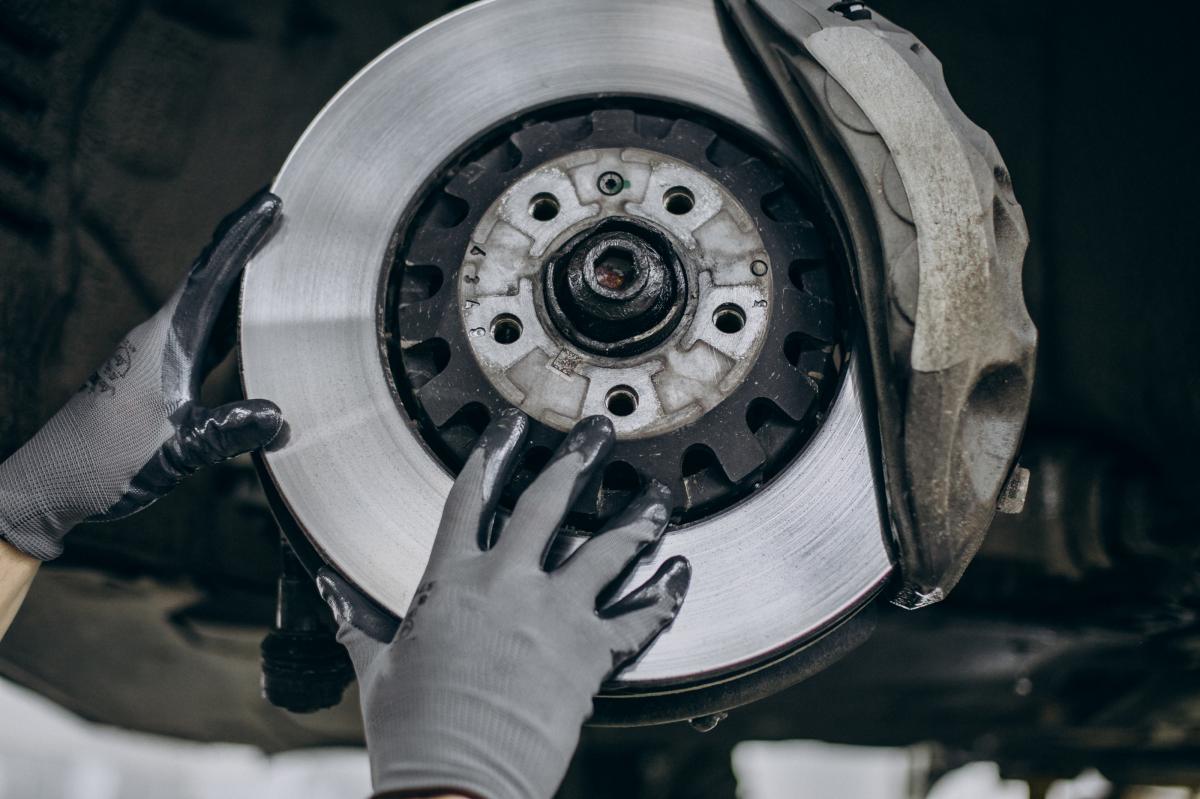Blog
Tips for Extending the Lifespan of Your Car Brakes

Introduction: Why Brake Longevity Matters for Every Driver
Your vehicle’s braking system performs approximately 1,500 stops per month under normal driving conditions, according to NHTSA research. This relentless workload makes proper brake maintenance non-negotiable for road safety. Neglected brakes account for 22% of mechanical failure-related crashes based on NHTSA’s 2023 report, with average repair costs soaring to $400-$800 when rotor damage occurs.
Modern brake systems combine hydraulic pressure, friction materials, and electronic safety components like ABS. This complex interplay means worn pads don’t just reduce stopping power – they force other components like calipers and master cylinders to compensate, accelerating system-wide wear. The signs of worn brake pads often appear gradually, allowing drivers to address issues before catastrophic failures occur.
By implementing these seven professional strategies for extending your car brakes’ lifespan, you’ll achieve:
- 30-50% longer pad/rotor service life (ASE Institute estimates)
- 15% improvement in emergency stopping distances
- $200-$600 annual savings on premature component replacements
Follow these evidence-based tips for extending the lifespan of your car brakes to transform your vehicle’s safety profile while protecting your budget from avoidable repair bills.
7 Professional Tips for Extending Brake Lifespan
Tip 1: Master Smooth Driving Techniques
Aggressive braking forces pads to endure 3-4 times more friction than gradual stops, according to NHTSA research. Maintain a 3-second following distance in dry conditions (4+ seconds in rain) to minimize panic braking. Use traffic light patterns and terrain changes to coast strategically. This preserves 30-40% of brake pad material compared to stop-and-go driving patterns.
Tip 2: Respect Vehicle Load Capacities
Every 100 lbs of excess weight increases stopping distance by 2-4 feet at 60 mph (AAA Foundation data). Consult your owner’s manual’s GVWR (Gross Vehicle Weight Rating) – exceeding it strains brake components by 18-22%. For hauling needs, consider professional towing equipment to distribute weight safely.
Tip 3: Utilize Engine Braking Correctly
On 6% grade descents, continuous brake use can generate 500°F+ temperatures – enough to warp rotors. Manual transmission drivers should downshift sequentially (e.g., 5th→4th→3rd). Automatic users can select L/2 gears. This reduces brake system workload by 60-70% while maintaining safe speeds.
| Driving Scenario | Brake Temp Range | Recommended Action |
|---|---|---|
| City Traffic | 200-300°F | Allow 2x Cooling Space |
| Mountain Descent | 400-600°F | Engine Braking + Intermittent Stops |
Tip 4: Implement 6-Month Inspection Cycles
ASE-certified mechanics recommend measuring:
- Pad thickness: Replace if under 3mm (1/8″)
- Rotor variation: Maximum 0.0005″ runout
- Fluide moisture: >3% requires flush
Early detection prevents 80% of costly caliper/piston failures. DIY enthusiasts can use digital thickness gauges for preliminary checks.
Tip 5: Immediate Replacement Protocols
Grinding metal indicates complete pad depletion – continuing to drive scores rotors, increasing repair costs 4x. Delaying fluid changes risks vapor lock (boiling point drops from 446°F to 311°F when contaminated). Always use manufacturer-approved DOT 3/4/5.1 fluids.
Tip 6: Comprehensive Cleaning Procedures
Road salt accelerates corrosion 5x faster. Use pH-neutral cleaners with soft bristles for:
- Caliper slide pins: Lubricate with silicone grease
- Rotor hats: Remove rust with 400-grit sandpaper
- Dust shields: Clear debris with compressed air
Tip 7: Premium Component Selection
OEM vs Aftermarket Comparison:
| Component | OEM Lifespan | Economy Parts |
|---|---|---|
| Ceramic Pads | 70k miles | 35k miles |
| Coated Rotors | 100k miles | 50k miles |
Invest in coated rotors and ceramic pads – they reduce brake dust by 90% and provide 40% better heat dissipation according to SAE International studies.
Common Brake Maintenance FAQs
How Often Should I Replace Brake Pads?
Brake pads typically last between 25,000–70,000 miles, but this varies based on driving conditions. Aggressive city drivers may need replacements sooner than highway commuters. The NHTSA recommends measuring pad thickness: replace them if worn below 3mm. For context, new pads are 10-12mm thick. Learn more about signs of worn brake pads.
Can I Check Brake Wear Myself?
Yes! Use a tread depth gauge to measure pad thickness through wheel spokes. Rotors should be inspected for scoring or grooves deeper than 1.5mm. Uneven wear often indicates caliper issues. DIYers can follow our guide on brake fluid maintenance, but consult a mechanic for complex diagnostics.
What Causes Brake Fluid Leaks?
Leaks usually stem from:
- Worn seals in master cylinders (40% of cases)
- Corroded brake lines, especially in snowy regions using road salt
- Damaged bleeder valves during DIY repairs
According to SAE International, contaminated fluid boils at lower temperatures, reducing braking power by up to 30%.
Does Weather Affect Brake Lifespan?
Extreme conditions accelerate wear:
| Climate | Impact | Prevention |
|---|---|---|
| Humid | Rotor rust | Weekly short drives to dry components |
| Snowy | Salt corrosion | Monthly undercarriage washes |
Are Ceramic Brake Pads Worth the Cost?
Ceramic pads outperform organic ones in:
- Noise reduction (up to 50% quieter)
- Dust production (70% less)
- Longevity (15-20% longer lifespan)
However, they cost 30-50% more. Heavy-duty drivers should consider semi-metallic options discussed in our brake pad comparison.
Conclusion: Protect Your Investment with Proactive Brake Care
Your car’s brakes are not just components—they are a vital safety system that demands consistent attention. By adopting the seven strategies outlined in this guide, such as monitoring brake fluid levels and addressing worn brake pads, you can prevent 40-50% of premature brake failures according to the National Highway Traffic Safety Administration (NHTSA).
Proactive maintenance delivers three key advantages:
- Enhanced Safety: Responsive brakes reduce stopping distances by up to 25% in emergency scenarios (IIHS data).
- Cost Efficiency: Replacing pads early avoids rotor damage, saving $300-$600 per axle.
- Long-Term Reliability: Clean, well-lubricated components last 2-3 years longer than neglected systems.
Don’t wait for warning signs like grinding noises or vibration. Schedule a professional inspection every 6 months—technicians use specialized tools to measure pad thickness to 0.1mm precision and test fluid moisture content. For DIY enthusiasts, our brake maintenance toolkit guide recommends essential equipment.
Final Call to Action: Book a brake service this week using our certified shop locator, and share this article to help others avoid the 160,000+ annual accidents linked to brake neglect (NHTSA). Remember: $150 spent today could prevent $2,000 in repairs tomorrow.

